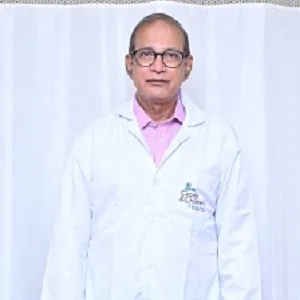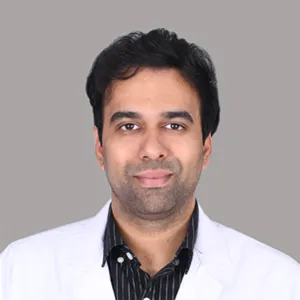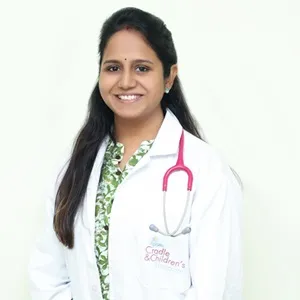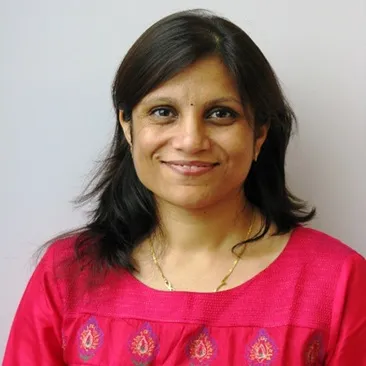Pediatric orthopaedics is a medical speciality focused on treating musculoskeletal conditions and injuries in children. This article covers important aspects of paediatric orthopaedics, including common conditions, treatment options, and preventive measures.
As a parent, it's natural to worry about your child's health and well-being, especially when it comes to their bones and muscles. After all, they're crucial to your child's mobility and overall physical development. Pediatric orthopaedics is the medical field that focuses on diagnosing, treating, and preventing conditions that affect your child's musculoskeletal system.
In this blog article, we'll explore the most common conditions treated by paediatric orthopedists, including their causes, symptoms, and available treatment options.
The Importance of Pediatric Orthopedics
Pediatric orthopaedics is essential in promoting the health and well-being of children. It helps in diagnosing and treating a range of musculoskeletal conditions that can affect their physical development and mobility. Orthopaedic specialists provide specialised care for children's unique musculoskeletal needs, which differ significantly from adults.
Early diagnosis and treatment of orthopaedic conditions can prevent severe complications in children and improve their quality of life. Paediatric orthopaedics plays a critical role in ensuring the healthy growth and development of children.
Key Aspects of Pediatric Orthopedics
Here are some important aspects of paediatric orthopaedics that parents should know about:
- Common Pediatric Orthopedic Conditions
Many types of musculoskeletal conditions can affect children, such as scoliosis, hip dysplasia, clubfoot, and developmental dysplasia of the hip. Symptoms of these conditions can include pain, stiffness, or difficulty moving. Causes can be genetic, developmental, or due to injury. Parents should seek medical attention if they notice any of these symptoms in their children, as early intervention can prevent further complications.
- Diagnostics
Many types of tests can be used to diagnose musculoskeletal conditions in children. X-rays, MRIs, and CT scans are common imaging tests used to diagnose bone and joint disorders. A physical exam and medical history can also help identify the cause of the condition. Before a diagnostic test, parents should prepare their child by explaining what to expect and reassuring them that the test is not painful.
- Non-surgical treatment options
Many paediatric orthopaedic conditions can be treated without surgery. This section will cover non-surgical treatment options such as physical therapy, bracing, and casting. The subheadings will detail the benefits, risks, and possible complications of each treatment option. Medications may also be prescribed to relieve pain or inflammation.
- Surgical Treatment Options
In some cases, surgical intervention may be necessary to correct a musculoskeletal condition. Procedures such as spinal fusion, joint replacement, and limb lengthening can be performed by a paediatric orthopaedic surgeon. Who qualifies for surgery depends on the type and severity of the condition. Benefits of surgery can include pain relief, improved mobility, and the prevention of further complications. However, surgery also carries risks and potential complications, such as infection or bleeding.
- Prevention:
While not all musculoskeletal conditions can be prevented, there are some steps parents can take to reduce the risk of their child developing these conditions. Encouraging physical activity, maintaining a healthy weight, and practising proper posture can help keep bones and joints healthy. Regular check-ups with a paediatrician can also help identify potential problems before they become more serious.
- Risk Factors
Some children may be at higher risk of developing musculoskeletal conditions. Risk factors can include genetics, certain medical conditions, or injury. Parents should be aware of these risk factors and discuss any concerns with their paediatrician.
Final Thoughts
In conclusion, paediatric orthopaedics is a vital field that deals with the musculoskeletal health of children. The care of children with orthopaedic conditions requires a unique set of skills and knowledge. The conditions and treatments discussed in this article are just a few examples of what paediatric orthopaedics involves.
If your child is experiencing any orthopaedic issues, it is crucial to seek medical attention as soon as possible. Remember, early diagnosis and treatment can lead to better outcomes.
Request an appointment at Apollo Cradle, Hyderabad - Jubilee Hills. Call 1860-500-4424 to book an appointment.
Pediatric orthopaedics is a branch of medicine that specialises in the diagnosis and treatment of bone and joint problems in children.2. When should I take my child to see a paediatric orthopaedic doctor?
If your child is experiencing joint pain, limping, or difficulty moving, it's important to seek the opinion of a paediatric orthopaedic doctor.
Some common conditions include scoliosis, clubfoot, hip dysplasia, and fractures.
Diagnosis often involves a physical exam, medical history review, and imaging tests such as X-rays and MRIs.
Treatment options may include physical therapy, bracing, casting, or surgery, depending on the condition and its severity.
Our Doctors
Treatments
- Anaesthesia & Pain Management
- General Pediatrics
- Growth Chart
- Newborn Screening
- Pediatric Allergy
- Pediatric Dermatology
- Pediatric Endocrinology
- Pediatric Nutrition
- Pediatric Orthopedics
- Pediatric Psychology
- Pediatric Surgery & Urology
- ROP Screening
- Stem Cell Banking
- Vaccination/Immunisation Schedule
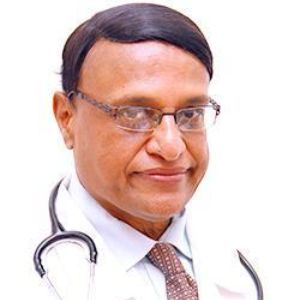
 90% Patient Satisfaction Score
90% Patient Satisfaction Score



